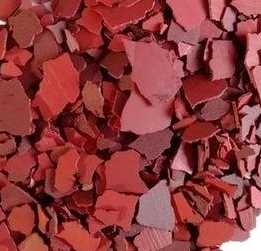Warning: Undefined array key "title" in /home/www/wwwroot/HTML/www.exportstart.com/wp-content/themes/1198/header.php on line 6
Warning: Undefined array key "file" in /home/www/wwwroot/HTML/www.exportstart.com/wp-content/themes/1198/header.php on line 7
Warning: Undefined array key "title" in /home/www/wwwroot/HTML/www.exportstart.com/wp-content/themes/1198/header.php on line 7
Warning: Undefined array key "title" in /home/www/wwwroot/HTML/www.exportstart.com/wp-content/themes/1198/header.php on line 7
- Afrikaans
- Albanian
- Amharic
- Arabic
- Armenian
- Azerbaijani
- Basque
- Belarusian
- Bengali
- Bosnian
- Bulgarian
- Catalan
- Cebuano
- China
- China (Taiwan)
- Corsican
- Croatian
- Czech
- Danish
- Dutch
- English
- Esperanto
- Estonian
- Finnish
- French
- Frisian
- Galician
- Georgian
- German
- Greek
- Gujarati
- Haitian Creole
- hausa
- hawaiian
- Hebrew
- Hindi
- Miao
- Hungarian
- Icelandic
- igbo
- Indonesian
- irish
- Italian
- Japanese
- Javanese
- Kannada
- kazakh
- Khmer
- Rwandese
- Korean
- Kurdish
- Kyrgyz
- Lao
- Latin
- Latvian
- Lithuanian
- Luxembourgish
- Macedonian
- Malgashi
- Malay
- Malayalam
- Maltese
- Maori
- Marathi
- Mongolian
- Myanmar
- Nepali
- Norwegian
- Norwegian
- Occitan
- Pashto
- Persian
- Polish
- Portuguese
- Punjabi
- Romanian
- Russian
- Samoan
- Scottish Gaelic
- Serbian
- Sesotho
- Shona
- Sindhi
- Sinhala
- Slovak
- Slovenian
- Somali
- Spanish
- Sundanese
- Swahili
- Swedish
- Tagalog
- Tajik
- Tamil
- Tatar
- Telugu
- Thai
- Turkish
- Turkmen
- Ukrainian
- Urdu
- Uighur
- Uzbek
- Vietnamese
- Welsh
- Bantu
- Yiddish
- Yoruba
- Zulu
Dec . 22, 2024 15:27 Back to list
bio propylene glycol
Understanding Bio-Propylene Glycol A Sustainable Alternative
Propylene glycol, a versatile substance known for its wide-ranging applications in various industries, is traditionally produced from petrochemical sources. However, the rise of sustainability concerns has prompted interest in bio-based alternatives. Enter bio-propylene glycol (bio-PG), a renewable counterpart that emerges from biomass rather than fossil fuels. This article delves into the characteristics, production processes, applications, and potential benefits of bio-propylene glycol.
What is Bio-Propylene Glycol?
Bio-propylene glycol is an organic compound classified as a colorless, odorless, and hygroscopic liquid. Chemically, it is similar to its petroleum-based counterpart, maintaining the same molecular structure (C3H8O2). This similarity allows bio-PG to be used interchangeably with conventional propylene glycol in many applications, including pharmaceuticals, food processing, cosmetics, and industrial products. The bio-based nature of bio-PG means that it is derived from renewable resources, primarily through processes involving the fermentation of sugars obtained from plants, such as corn, sugarcane, and other forms of biomass.
Production Processes
The production of bio-propylene glycol generally involves two primary methods fermentation and chemical conversion
.1. Fermentation In this method, microorganisms, such as yeast or bacteria, are used to convert sugars into glycerol. The glycerol is then further processed to yield propylene glycol through different chemical reactions. This approach highlights the potential of bio-engineering techniques that enhance yield and efficiency.
2. Chemical Conversion Another route involves the catalytic conversion of renewable feedstocks like glycerol (a by-product of biodiesel production) into propylene glycol. This process relies on advanced catalytic techniques that facilitate the transformation while maintaining a sustainable approach.
Applications Across Industries
bio propylene glycol

Bio-propylene glycol is rapidly gaining traction across numerous sectors due to its intrinsic properties and safety profile. Here are a few prominent applications
- Food Industry Recognized as Generally Recognized As Safe (GRAS) by the FDA, bio-PG serves as a food additive, acting as a humectant, solvent, and stabilizer in food products. It helps maintain moisture and enhances the texture of various food items.
- Pharmaceuticals Due to its safety and effectiveness, bio-propylene glycol is used in many pharmaceutical formulations, including ointments, creams, and liquid medications. It enhances the solubility and bioavailability of active ingredients.
- Cosmetics and Personal Care In the cosmetics sector, bio-PG is utilized for its moisturizing properties, making it an ingredient in lotions, shampoos, and other personal care products. Its non-toxic nature ensures safe use on the skin.
- Industrial Applications Bio-PG is also employed in various industrial settings, including antifreeze products, de-icing agents, and as a solvent in coatings and plastics. Its biodegradability makes it an appealing option for environmentally-conscious manufacturers.
Environmental Benefits
One of the primary advantages of bio-propylene glycol is its potential to reduce the environmental impact associated with traditional propylene glycol production. Utilizing renewable, plant-based resources decreases dependency on fossil fuels and can lower greenhouse gas emissions significantly. Furthermore, bio-PG is often produced with fewer hazardous by-products, which promotes a cleaner production process.
Conclusion
As industries continue to prioritize sustainability, bio-propylene glycol emerges as a promising alternative to its petrochemical-based counterpart. With applications in food, pharmaceuticals, cosmetics, and various industrial fields, it not only maintains the functional properties of conventional propylene glycol but also contributes to a greener, more sustainable future. As technologies advance and production becomes more efficient, the adoption of bio-PG is likely to increase, paving the way for environmental stewardship and innovation in multiple sectors. The transition to bio-based alternatives like bio-propylene glycol represents a step forward in creating a more sustainable and responsible chemical industry.
Latest news
-
Certifications for Vegetarian and Xanthan Gum Vegetarian
NewsJun.17,2025
-
Sustainability Trends Reshaping the SLES N70 Market
NewsJun.17,2025
-
Propylene Glycol Use in Vaccines: Balancing Function and Perception
NewsJun.17,2025
-
Petroleum Jelly in Skincare: Balancing Benefits and Backlash
NewsJun.17,2025
-
Energy Price Volatility and Ripple Effect on Caprolactam Markets
NewsJun.17,2025
-
Spectroscopic Techniques for Adipic Acid Molecular Weight
NewsJun.17,2025

